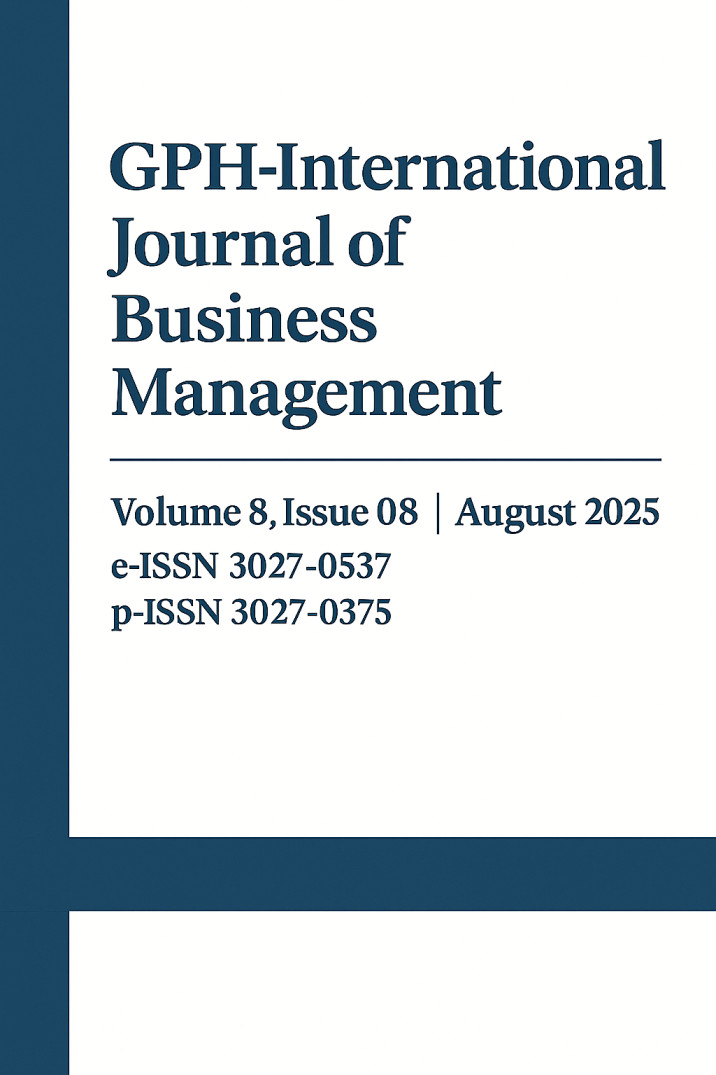SOLUTIONS TO PROMOTE GREEN CONSUMER BEHAVIOR: A CASE STUDY OF BAGASSE BASED BIOPRODUCTS IN THE CIRCULAR ECONOMY MODEL IN VIETNAM
Abstract
This study examines green consumer behavior in Vietnam, focusing on bagasse-based bioproducts - a category of products gaining increasing popularity but still facing barriers such as high costs and limited market penetration. The research indicates that short-term solutions (raising awareness, economic support, and information transparency) combined with long-term strategies (developing a circular economy model for the sugarcane industry) play a crucial role in fostering this behavior. The coordinated implementation of these measures not only encourages green consumption to become mainstream behavior but also contributes to shaping a circular and sustainable economy in Vietnam.
Downloads
References
Anh Ha (2023). Bagasse Products – A Sustainable Environmental Protection Solution. https://shopequo.com/vi/blogs/ong-hut/cac-san-pham-tu-ba-mia
Chan, R.Y.K. (2001). Determinants of Chinese consumers’ green purchase behavior. Psychology & Marketing, 18(4), 389–413.
Chen T. B., & Chai L. T. (2010). Attitude towards the Environment and Green Products: Consumer’s Perspective. Management Science and Engineering, 4(2), 27-39.
Chen Y., Chang, C. (2012). Enhance green purchase intentions – The role of green perceived value, green perceived risk, and green trust. Management Decision, 50(3), 502–520.
Ellen MacArthur Foundation. (2012). Towards the circular economy: Economic and business rationale for an accelerated transition. Retrieved from http://circularfoundation.org/sites/default/files/tce_report1_2012.pdf
Halpenny E. H. (2006). Examining the relationship of place attachment with pro-environmental intentions. Proceedings of the 2006 Northeastern Recreation Research Symposium, GTR-NRS-P-14.
Hoang Trong Hung, Huynh Thi Thu Quyen, Huynh Thi Nhi (2018). Factors influencing green consumer behavior in Hue city. Hue University Journal of Science: Economics and Development, 127(5A), 199–212. DOI: 10.26459/hueuni-jed.v127i5A.5070
Irawan, R. and Darmayanti, D. (2012). The Influence Factors of Green Purchasing Behavior: A Study of University Students in Jakarta. School of Marketing, Bina Nusantara University – International.
Lee, K (2010). The green purchase behavior of Hong Kong young consumers: the role of peer influence, local environmental involvement, and concrete environmental knowledge. Journal of International Consumer Marketing, 23(1), 21–44.
Manh Hung (2022). Plastic Waste in Vietnam: Current Situation and Solutions. https://www.tapchicongsan.org.vn/web/guest/bao-ve-moi-truong/-/2018/826009/rac-thai-nhua-o-viet-nam--thuc-trang-va-giai-phap.aspx
Mostafa M. M. (2007). Gender differences in Egyptian consumers’ green purchase behavior: The effects of environmental knowledge, concern and attitude. International Journal of Consumer Studies, 31, 220–229.
Nimse, P., Vijayan, A., Kumar, A. & Varadarajan, C. (2007). A review of green product database. Environmental Progress, 26(2), 131–137.
Nguyen Thi Hanh (2024). Green Consumption Trends in Sustainable Development in Vietnam. https://tapchicongthuong.vn/xu-huong-tieu-dung-xanh-trong-phat-trien-ben-vung-tai-viet-nam-123316
Nguyen Thi Trang (2023). Research on Recycling Bagasse for Green Biodegradable Materials. https://vnexpress.net/khoa-hoc/cuoc-thi-sang-kien-khoa-hoc-2023/san-pham/nghien-cuu-tai-che-ba-mia-ung-dung-che-tao-vat-lieu-xanh-than-thien-moi-truong-co-kha-nang-phan-huy-sinh-hoc-1086574294
Nguyen Van Lanh (2022). Building a framework and evaluation criteria for implementing the circular economy. Asia–Pacific Economics, February 2022.
Nguyen Van Thoi (2025). What Are Bioproducts? Differences Between Bioproducts and Bio-Agents. https://naangroup.com/blogs/news/san-pham-sinh-hoc-la-gi
Pham Ngoc Hue (2024). Circular Economy Development in Agriculture Worldwide and Policy Recommendations for Vietnam. https://www.tapchicongsan.org.vn/web/guest/kinh-te/-/2018/1017202/phat-trien-kinh-te-tuan-hoan-trong-nong-nghiep-tren-the-gioi-va-mot-so-khuyen-nghi-doi-voi-viet-nam.aspx
Raukoff & Wu J. (2013). Influence Mechanism of Green Consumption Behavior Based on Ajzen Planned Behavior Theory. Journal of Finance and Economics, 2, 91–100.
Renouvo (n.d). Bagasse-Based Products: Eco-Friendly Food Packaging and Tableware. https://renouvo.net/vi/chat-lieu-huu-co/san-pham-lam-tu-ba-mia/
Shamdasani, P., Chon-Lin, G., Richmond, D. (1993). Exploring green consumers in an oriental culture: Role of personal and marketing mix. Advances in Consumer Research, 20(1), 488–493.
Viet Thong (2025). What Is Bagasse? Hidden Value of Sugarcane By-Products. https://xenuocmiavietthong.com/ba-mia/
Vietnam Zero Waste (2021). Bioproducts and Bio-Agents. https://vietnamzerowaste.vn/san-pham-sinh-hoc
The authors and co-authors warrant that the article is their original work, does not infringe any copyright, and has not been published elsewhere. By submitting the article to GPH-International Journal of Business Management, the authors agree that the journal has the right to retract or remove the article in case of proven ethical misconduct.




























